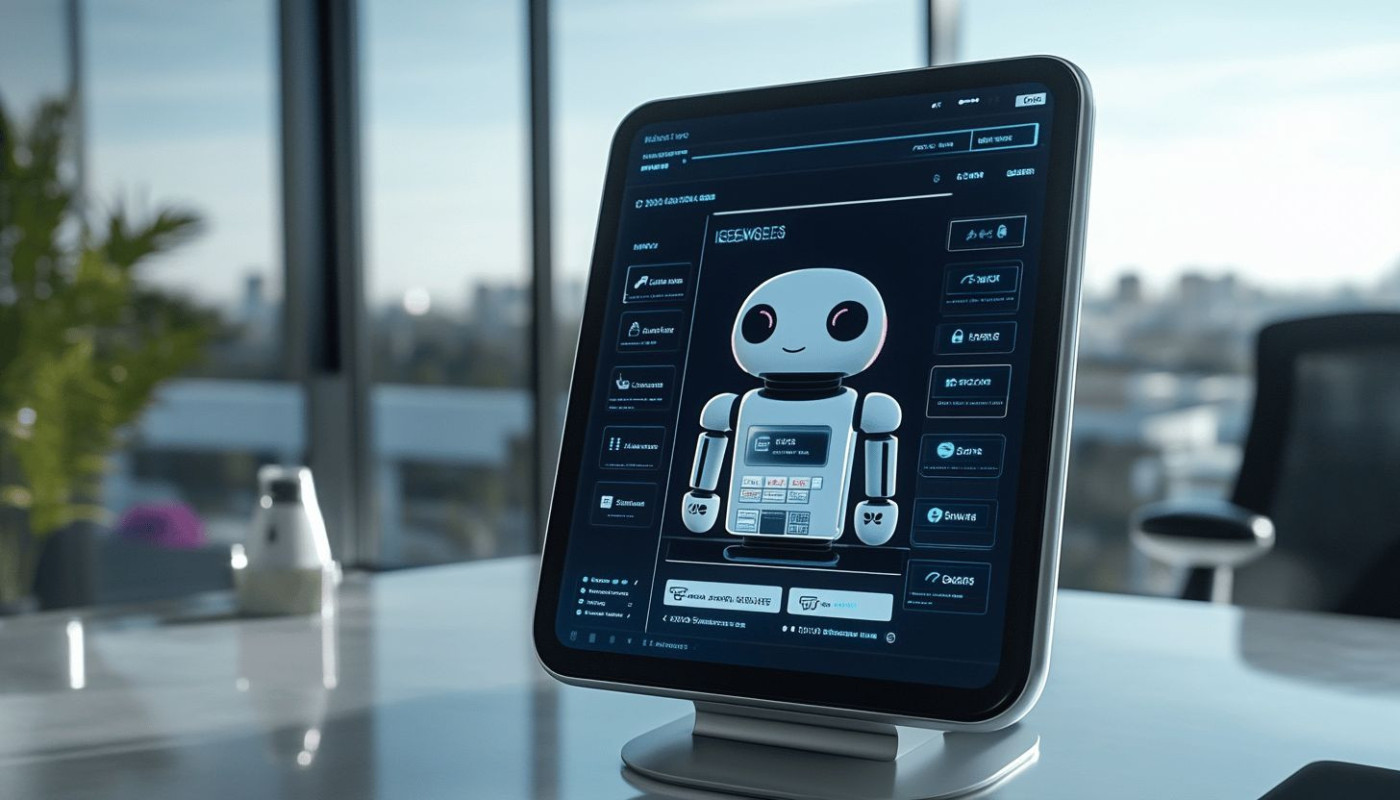Table of contents
Selecting the right chatbot builder can transform the way a business interacts with its customers, streamlining communication and boosting efficiency. With the rapid advancement of artificial intelligence and automation tools, the decision has never been more nuanced or impactful. Discover how to navigate the crowded landscape of chatbot creation and find the optimal fit for your unique business requirements in the paragraphs below.
Identify your business objectives and user needs
Start by articulating the distinct objectives your organization seeks to realize through the adoption of a chatbot builder. Assess whether the main focus lies in nurturing leads, delivering responsive customer service, boosting sales through tailored recommendations, or streamlining the resolution of common inquiries. Delve into the specifics of your clientele by outlining user personas, cataloging the most frequent issues they raise, and identifying the digital platforms where they are most active, such as messaging apps, business websites, or social networks. Scrutinize your operational processes to pinpoint the stages at which conversational technology could yield the most value, for example by reducing wait times or providing instant support around the clock.
By constructing a detailed map of user journeys and typical touchpoints, it becomes easier to match functional requirements with the right chatbot solution. Incorporate feedback from both frontline staff and customers to expose pain points that automation could address, such as repetitive administrative tasks or the need for multilingual support. Consider how integrating a chatbot might influence other digital systems in use, ensuring compatibility and smooth information flows across platforms like CRM tools or e-commerce backends. This level of strategic foresight equips organizations to set clear benchmarks for chatbot performance and user satisfaction.
Among the array of options available, Botnation AI distinguishes itself by offering a cost-free, intuitive platform that enables even non-technical teams to craft sophisticated AI-driven chatbots without writing a single line of code, making it an accessible solution for businesses seeking agility and innovation. By investing time in understanding both business ambitions and end-user expectations, companies place themselves in a strong position to select a chatbot builder that truly aligns with their needs and fosters genuine engagement. Ultimately, this alignment translates to a more effective customer experience and a greater return on investment for digital transformation initiatives.
Assess natural language processing and integration capabilities
Begin by closely reviewing the natural language processing capabilities embedded in each chatbot builder. Consider whether the platform can accurately interpret user intent, recognize colloquialisms, and support multilingual conversations if needed. The ability to manage ambiguous queries and extract relevant information from free-form input distinguishes advanced solutions from basic script-based bots. For businesses aiming to deliver personalized experiences, selecting a builder with machine learning-enhanced NLP ensures more fluid and engaging dialogue, reducing friction for end users.
Examine how easily the chatbot builder can connect with other core business tools. Integration with CRM systems, marketing automation software, and customer support platforms minimizes data silos and supports a 360-degree view of the customer journey. Builders with open APIs and strong webhook options let organizations automate processes such as lead capture, appointment scheduling, or support ticket creation directly from chat interactions. This not only streamlines workflows but also allows for real-time data syncing and tailored responses based on up-to-date information.
Pay attention to the range of deployment options offered by the chatbot builder, including compatibility with popular messaging channels like WhatsApp, Facebook Messenger, and website chat widgets. Flexible deployment enables consistent communication across preferred platforms, meeting customers where they already are. Additionally, investigate whether the builder allows for custom integrations with proprietary systems or less common applications through SDKs or low-code connectors. These features empower businesses to scale automation, adapt quickly to new technology trends, and maintain a cohesive brand voice throughout all digital touchpoints.
Evaluate ease of use and customization flexibility
Selecting a chatbot builder starts with examining how intuitive its interface is for non-technical users. Platforms that offer visual editors and pre-built templates allow marketing, customer support, or sales teams to craft conversations quickly, bypassing complex coding steps. Drag-and-drop workflows make it straightforward to build logic flows and test responses, which accelerates deployment and lets teams iterate based on real-world feedback. Being able to rapidly prototype and modify conversations gives businesses the agility to respond to changing customer needs and campaign goals.
Customization is often the key to aligning a chatbot with unique business objectives. Evaluate whether a platform supports the creation and modification of custom intents and entities, as these define how the chatbot recognizes and handles user input. Look for tools that not only let you adjust dialogue trees but also integrate external data sources or business logic, so the chatbot can provide personalized responses, check inventory, or escalate complex cases. This level of flexibility ensures the solution remains effective as business processes evolve.
While simplicity is vital for day-to-day management, advanced users may require deeper customization. Robust builders should offer scripting or markup options, enabling the creation of sophisticated conversational flows and conditional logic not easily handled by basic interfaces. This capability empowers organizations to address intricate scenarios—such as multi-step transactions or dynamic content delivery—without waiting for vendor support. Assessing this balance between usability and depth prevents hitting a ceiling as chatbot requirements become more complex.
Monitoring and optimizing chatbot performance is another consideration often overlooked in early evaluations. Built-in analytics dashboards should provide actionable insights, such as user drop-off points, frequently misunderstood queries, and resolution rates. Regularly reviewing these metrics enables teams to fine-tune conversations, improve user satisfaction, and justify investment in the platform. Prioritize builders that offer clear, accessible reporting alongside easy editing tools to foster a cycle of ongoing improvement and measurable business impact.
Review scalability, security, and compliance features
Evaluate the chatbot builder's capacity to seamlessly handle a surge in conversations during promotional events, product launches, or seasonal spikes. Some platforms offer auto-scaling capabilities, distributing workloads across servers or cloud infrastructure, ensuring consistent performance even as the number of users grows. Look for customizable resource allocation and robust uptime guarantees, which help prevent outages or delays that could impact customer satisfaction. Prioritize builders that provide clear usage analytics and system monitoring, allowing your team to anticipate needs and optimize for peak demand.
Equally, scrutinize the security landscape of each option. Modern chatbot builders should include end-to-end encryption for data transmitted and stored, minimizing risks associated with data breaches or unauthorized access. Multi-factor authentication and granular permission settings further protect both user and back-office interactions. For organizations subject to regulatory requirements, ensure the builder supports features such as data retention policies, user consent management, and exports for audit purposes. Proactive compliance features not only reduce legal exposure but also foster client confidence by demonstrating a commitment to protecting their information.
Compare pricing models and support resources
Evaluating pricing models is a foundational step when selecting a chatbot builder that fits your business requirements. Some platforms charge according to the number of active users, while others base costs on the volume of interactions or offer fixed subscription plans. Carefully review any additional fees for integrating with third-party software, accessing analytics dashboards, or leveraging advanced customization. For example, a builder may advertise a low entry price, but robust capabilities like multilingual support or custom workflows could require moving to a higher tier.
Support resources play a pivotal role in the adoption and longevity of your chatbot solution. Comprehensive documentation allows your team to troubleshoot issues independently and accelerates mastery of the platform. Investigate whether the provider offers live chat, ticket-based assistance, or dedicated account management, especially if your business relies on real-time customer engagement. Some platforms cultivate active user communities where participants share troubleshooting tips and innovative use cases, which can be a valuable auxiliary resource.
Consider the onboarding experience as a differentiator among chatbot builders. Some providers deliver step-by-step guides, interactive tutorials, and webinars, which can shorten the learning curve and empower even non-technical staff members to contribute. Others might assign a technical consultant to assist with initial setup and integration into existing systems. Weigh these support features against your organization’s internal capabilities to avoid unnecessary delays or reliance on external consultants.
Ongoing success depends on the availability and responsiveness of support as your usage scales or new requirements arise. Evaluate service level agreements that guarantee response times and prioritize platforms with a proven record of addressing technical challenges efficiently. For growing teams or businesses planning to evolve their conversational experiences, a chatbot builder backed by strong support infrastructure can make the difference between a smooth rollout and frustrating setbacks.
Similar articles

Streamlining Your Workflow With Efficient Strategies For Kubernetes Upgrade Deployment

Streamlining Your Business With Efficient Kubernetes Cluster Upgrades

How To Choose The Best Mobile Booster For Office Efficiency?

Best Practices For A Seamless Kubernetes Cluster Upgrade

How To Craft Your Ideal AI Companion For Daily Interaction?

Ensuring Business Continuity During A Kubernetes Cluster Upgrade

How Does An ESIM Simplify Your Mobile Data Needs While Traveling In Europe?

How Small Businesses Can Leverage A Chatbot Builder To Improve Customer Service

How Small Businesses Can Benefit From Using A Chatbot Builder

Exploring The Impact Of Jurisdiction Choice On Crypto Licensing Success

How Choosing The Right Chatbot Builder Enhances Customer Service

Exploring The Impact Of UX Design On Chatbot Effectiveness

Advancing AI Prompt Design For Enhanced Creative Outputs

Exploring The Future Of Multi-channel Chatbots In Customer Service

The Evolution And Future Of Conversational AI In Customer Service

How To Build A Chatbot Without Coding Skills In Under 10 Minutes

Understanding The Emotional Stages Of Breakup And How To Navigate Them

How AI-driven Chat Platforms Revolutionize Customer Interactions

Exploring The Future: How Free AI Tools Are Shaping Industries

How Integrating Chatbots Can Transform Customer Service Efficiency

Enhancing Customer Engagement With Advanced QR Code Features

Step-by-step Guide To Diagnosing Connectivity Issues With Online AI Tools

